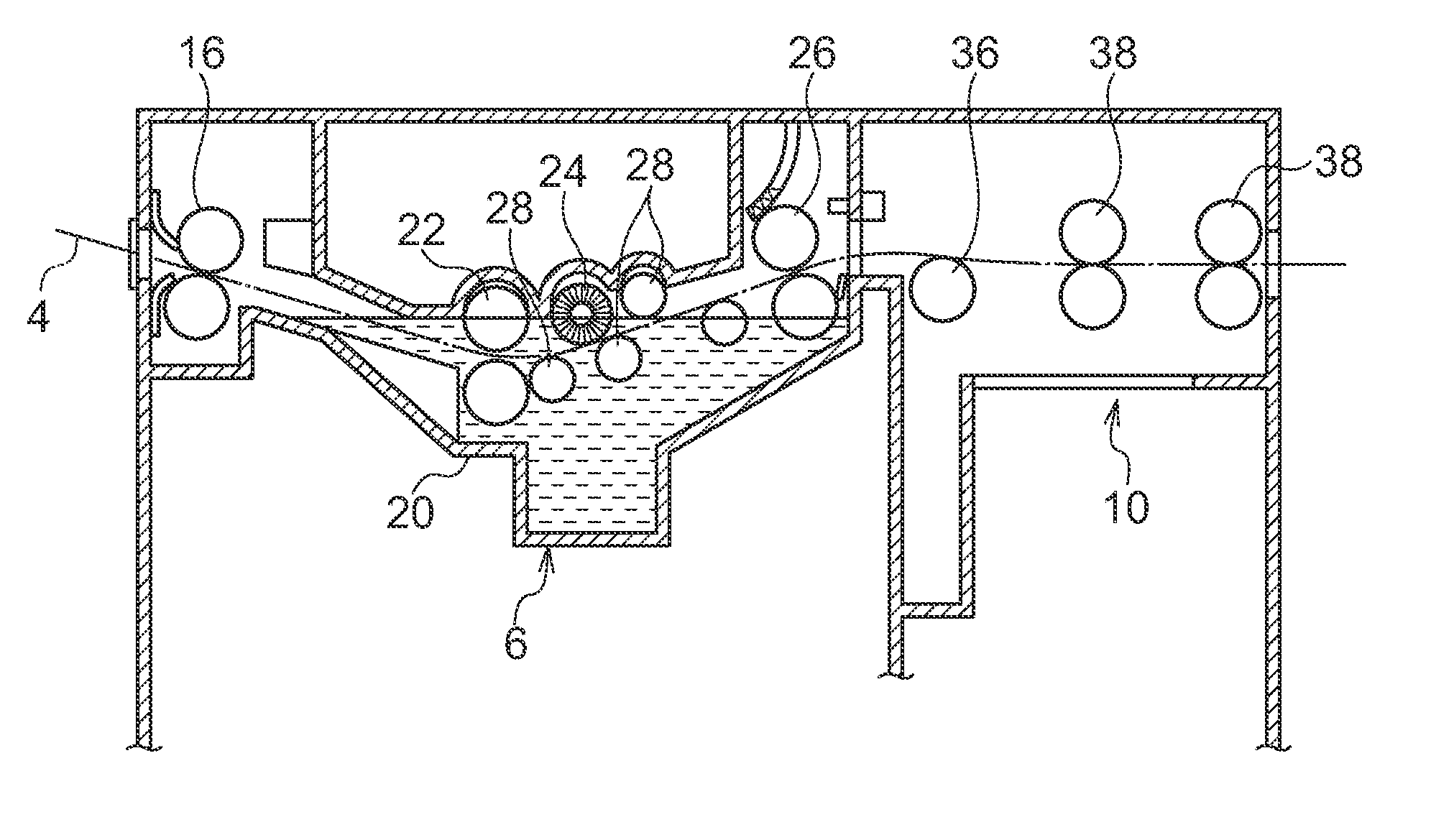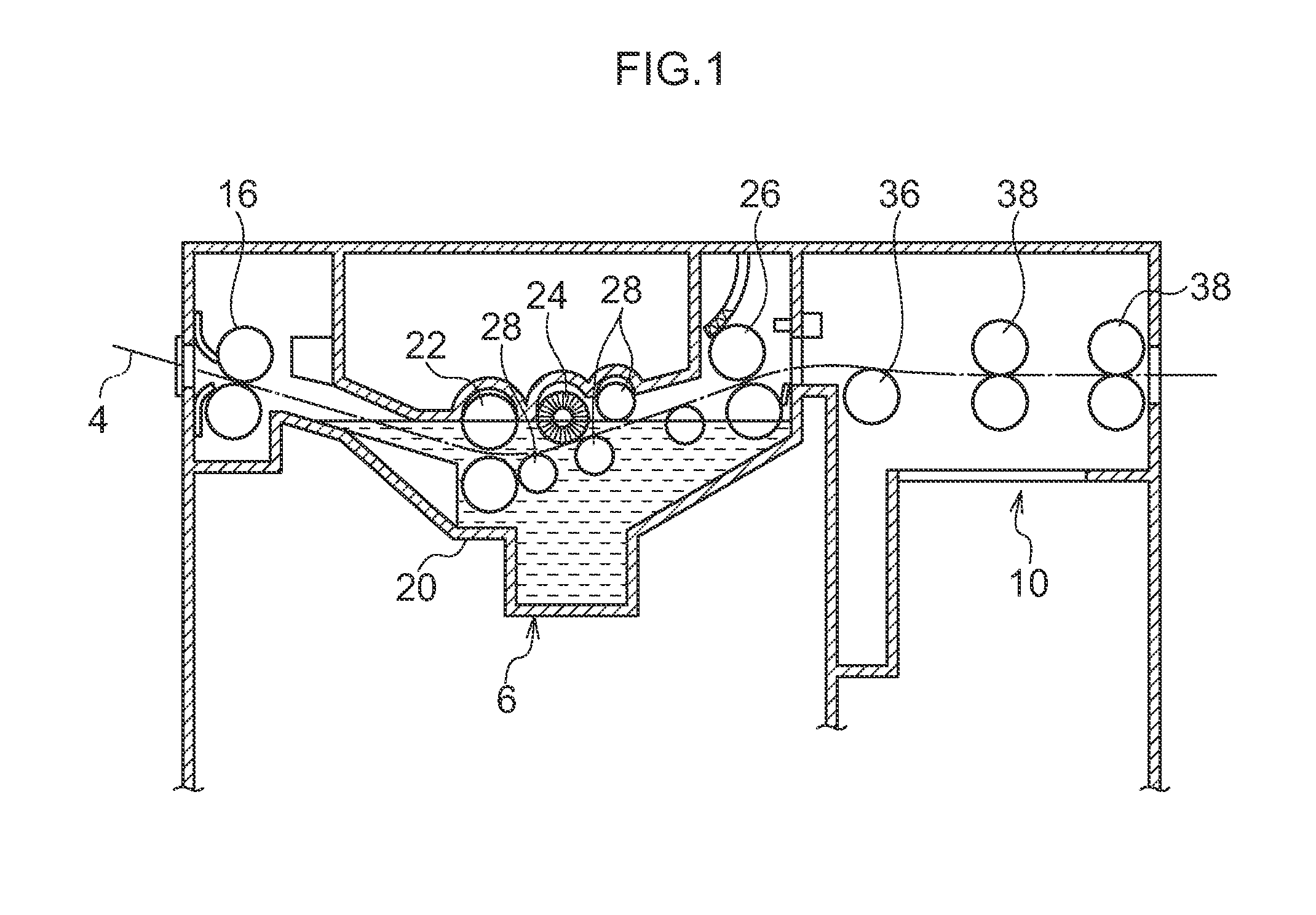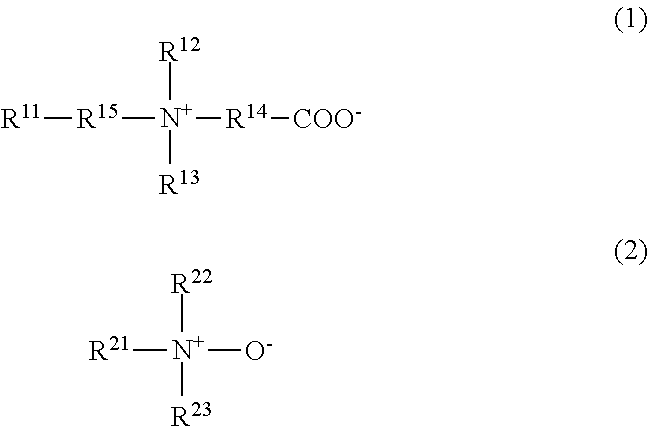Method for producing a planographic printing plate
a technology of planographic printing and printing plate, which is applied in the direction of lithography, photomechanical equipment, instruments, etc., can solve the problems of image recording layers usable for infrared laser recording generating development wastes, image defects, and precipitation to form development wastes, so as to prevent the prevent time-dependent generation of development wastes. , good developability
- Summary
- Abstract
- Description
- Claims
- Application Information
AI Technical Summary
Benefits of technology
Problems solved by technology
Method used
Image
Examples
synthesis example 1
[0327]In a 500-ml three-necked flask, 125 g of 4,4′-diphenylmethane diisocyanate and 67 g of 2,2-bis(hydroxymethyl)propionic acid were placed, and dissolved in 290 ml of dioxane. After adding 1 g of N,N-diethylaniline, the mixture was stirred for 6 hours under reflux by dioxane. After completion of the reaction, the reaction product was added slowly to a solution containing 4 L of water and 40 ml of acetic acid, thereby precipitating a polymer. The solid was dried in vacuo, thereby obtaining 185 g of polyurethane resin (1). The acid content thereof was 2.47 meq / g. The weight average molecular weight (polystyrene standard) was 28,000 as measured by GPC.
synthesis examples 2 to 7
[0328]Polyurethane resins (2) to (7) were synthesized in the same manner as in Synthesis Example 1, except that the starting material used in Synthesis Example 1 was replaced with the diisocyanate compounds and diol compounds shown in Table 1.
PolyurethaneresinDiisocyanateDiol(2)Diisocyanate:Diol = 1.5:1Molecular weight: 7,000(3)Diisocyanate:Diol = 1:1.2Molecular weight: 12,000(4)Diisocyanate:Diol = 1:1.1Molecular weight: 17,000(5)Disocyanate:Diol = 1:1Molecular weight: 23,000(6)Diisocyanate:Diol = 1:1Molecular weight: 25,000(7)Diisocyanate:Diol = 1:1Molecular weight: 25,000
examples a1 to a15
, and Comparative Examples A1 to A5
[0329]Making of Planographic Printing Plate Precursor 1 used in Example A1
[0330]Preparation of Support
[0331]An aluminum plate having a thickness of 0.24 mm (aluminum alloy composed of Si: 0.06% by mass, Fe: 0.30% by mass, Cu: 0.014% by mass, Mn: 0.001% by mass, Mg: 0.001% by mass, Zn: 0.001% by mass, and Ti: 0.03% by mass, the balance being Al and unavoidable impurities) was subjected to continuous surface treatment as described below.
[0332]Using an alternating voltage at 60 Hz, electrochemical surface-roughening treatment was continuously carried out. The electrolytic solution was a 10 g / l nitric acid aqueous solution containing 5 g / l of aluminum ions and 0.007% by mass of ammonium ions, and the solution temperature was 80° C. After water washing, the aluminum plate was subjected to etching treatment at 32° C. with a spray containing 26% by mass of sodium hydroxide and 6.5% by mass of aluminum ions, whereby the aluminum plate was dissolved at a ra...
PUM
 Login to View More
Login to View More Abstract
Description
Claims
Application Information
 Login to View More
Login to View More - R&D
- Intellectual Property
- Life Sciences
- Materials
- Tech Scout
- Unparalleled Data Quality
- Higher Quality Content
- 60% Fewer Hallucinations
Browse by: Latest US Patents, China's latest patents, Technical Efficacy Thesaurus, Application Domain, Technology Topic, Popular Technical Reports.
© 2025 PatSnap. All rights reserved.Legal|Privacy policy|Modern Slavery Act Transparency Statement|Sitemap|About US| Contact US: help@patsnap.com



